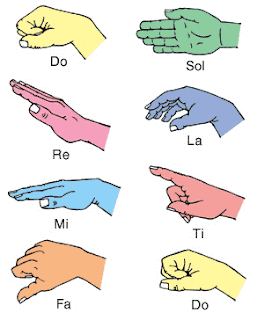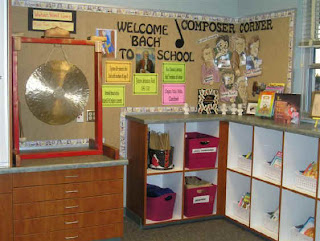Lately I’ve been
filing through my memory for warm up exercises I used to do in choir growing up
and even in college and sorting/modifying them to make them appropriate for
children ages K-5. It’s important to
make these exercises fun and engaging for students so that they associate
singing with positive connotations, rather than as something that’s scary and
embarrassing. This is especially crucial
for the upper grades (4th and 5th) as they’re at a really
vulnerable age in terms of building self-esteem. Music should be a place to build their
self-esteem and confidence, not something that is humiliating and damaging to
their personal growth.
I’ve pinpointed
several warm-up exercises that I think are extremely accessible for elementary
students and will help them relax and have fun singing with one another. Here
they are:
1.
Breathing Exercises: These are great for getting students to use their diaphragms and
warm up their vocal chords. Students breath in through their nose, hold for 4
counts, and then let out through their mouths saying SSS (like a snake) have
them do this both as loudly and as quietly as possible to practice dynamics and
control. Tell them to imagine they are a huge anaconda and then the smallest
rattlesnake. Playing into their imagination helps them let go and have fun with
the exercise. Another great breathing exercise is panting like a dog. Have
student relax their tongue so it hangs out of their mouth like a dog, and pant.
While panting, have them place their hands on their diaphragm to feel it
working. This exercise warms up their vocal cords, opens their nasal passages
and opens their throats.
2.
The Siren: In this exercise
students their voice inflection and range to sound like a siren going up as
high as they can and as low as they can for as long as they can. Just make sure
they are not screaming or screeching - this will hurt their voices. Always
model the exercise to make sure they are using their voices correctly.
3.
Humming: This is great
because it’s easy for students to do and it helps place the soft palate in a
high position, which is optimum for healthy singing. The buzzing sensation high
in the sinuses is another indicator that the passage of sound is not coming
from the throat. This is an easy way to help students feel the natural
sensation of singing correctly and safely.
4.
Yum, Yum, Yum, Yum, Yum!: This is a fun exercise that helps loosen
the jaw and softly warms the voice by emphasizing the vowel. Have students sing it in the progression of
Do, Mi, So, Mi, Do. This is also appropriate singing on “buzz, buzz, buzz,
buzz, buzz” or using lip trills, “br,br,br,br,br,” which is basically like
blowing bubbles out of water.
5.
Tongue Twisters: Using tongue twisters and alliteration in chorus is great
for diction practice. Some that I like to do are “The lips the teeth the tip of
the tongue,” “Shelly sells sea shells down by the sea shore,” and “Fuzzy Wuzzy was a bear,
Fuzzy Wuzzy had no hair, Fuzzy Wuzzy wasn't very fuzzy, was he?”
6.
I love to sing!: Students sing those
exact words in the following Solfege progression: Do, Mi So, Do, So, Mi, Do or
in Solfege numbers it’s: 1,3,5,7,5,3,1. It’s fun to move your hand in a
circular motion, make the circle bigger the higher you sing. This helps
students visualize their pitch going up and helps keep them from going flat.
You can also have student sing the actual Solfege words and sign the Kodály
hand motions
















